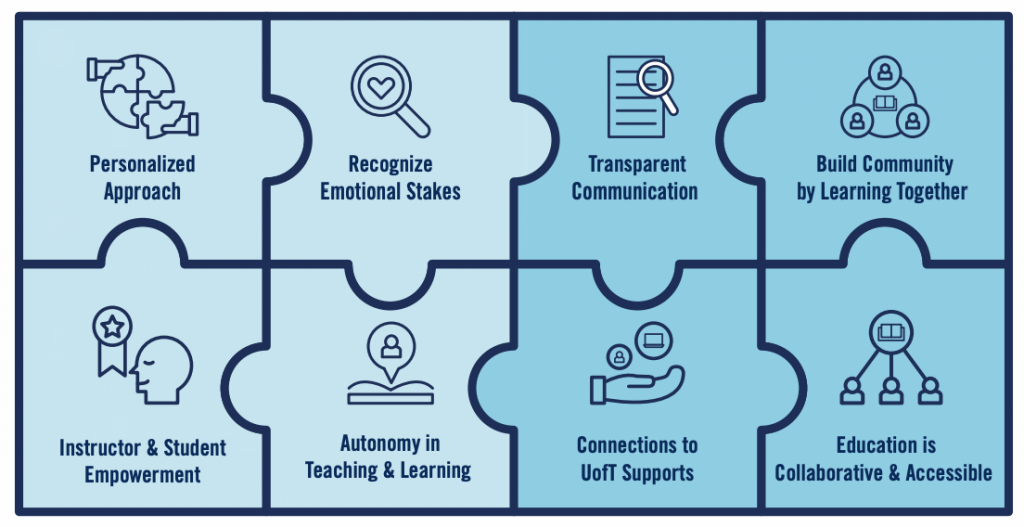By Philippa Gosine, Senior Research Assistant

Through our user-centered consultations, we’ve realized that learning spaces are extremely personal and important places for the people that use them. Instructors and students have a strong sense of ownership over their classrooms and want to see their individual needs and preferences in the design of learning spaces.
Through our past work, we’ve learned that the design of classroom spaces has the potential to create a shift in how the many players in the space think about teaching and learning if trust is built in the process. This includes acknowledging the attachments instructors and students have to their learning spaces, involving stakeholders in the design process with clear responsibilities and expectations, and ensuring transparent communication. As digital technologies become increasingly common in course delivery, new opportunities and challenges arise given the emotional ties and attachments people have to familiar learning spaces. More about the importance of trust in classroom (re)design can be discovered in our Winter 2020 report.
A Transformation in Learning Spaces
In the last 8 months, we have seen a sudden, forced transformation in the instructional landscape. It’s made us think deeply about what it means to be a student or instructor and how we view learning environments has changed with it. Our Winter 2019 report focused on the importance of connection in classrooms, but now instructors and students are concerned about how to engage and connect in meaningful ways online as well as how to address the new accessibility and equity issues that arise with teaching and learning in a pandemic.

In July and August 2020, we interviewed staff providing technical and teaching support to instructors and ran empathy-based focus groups with undergraduate and graduate students. Through these interactions, it was clear that building trust is more important than ever. This includes addressing issues of accessibility and equity, such as diverse home learning environments, external stressors, and other responsibilities; being flexible to accommodate the diversity of learners through different methods of course delivery, assessment and engagement; and providing appropriate supports and resources to build trust that online learning environments are inclusive of all users. Students and instructors alike want to feel that their needs are met; from the instructor who has only ever taught using a blackboard to the instructor who is constantly experimenting with incorporating new technology in their teaching. It also means acknowledging the importance of the experience beyond academics, including the attachments people have to the university spaces, the supports and the community. Finally, given the level of uncertainty and change, the UofT community wants honest and transparent communication, to feel informed and feel heard, even when unknowns exist.
The Importance of Growth
While not all experiences in the pandemic were positive, seeing growth through the discomfort of a forced transition, such as an instructor who discovered a new technology that can enhance their future in-person classes, highlighted that with the appropriate supports, community, and approaches, new ideas can flourish. This can be seen in our most recent report from November 2020. As the UofT community thinks about the future of teaching and learning spaces, the TIL team developed 8 principles of learner-centered design to learning spaces.

You can learn more about the importance of these principles, how they might apply in different contexts at UofT, and many of our core insights from community members by visiting our most recent reports that are linked below. Together, we can reimagine how learning spaces can transform and evolve to meet both instructor and student needs in these changing times.
- Winter 2020 Report: Becoming Trusted Partners in Classroom (re)Design
- Summer 2020 Report: New Forms of Learning Require New Forms of Trust
- Fall 2020 Report: Learner-Centered Design
If you have any questions about our work or would like to get in touch, email us at innovationhub@utoronto.ca and we would be happy to connect with you! Additional reports on our previous projects can also be found here: http://blogs.studentlife.utoronto.ca/innovationhub/reports/
0 comments on “Transforming the Instructional Landscape: Moving Towards Learner Centric Design in Times of Change”